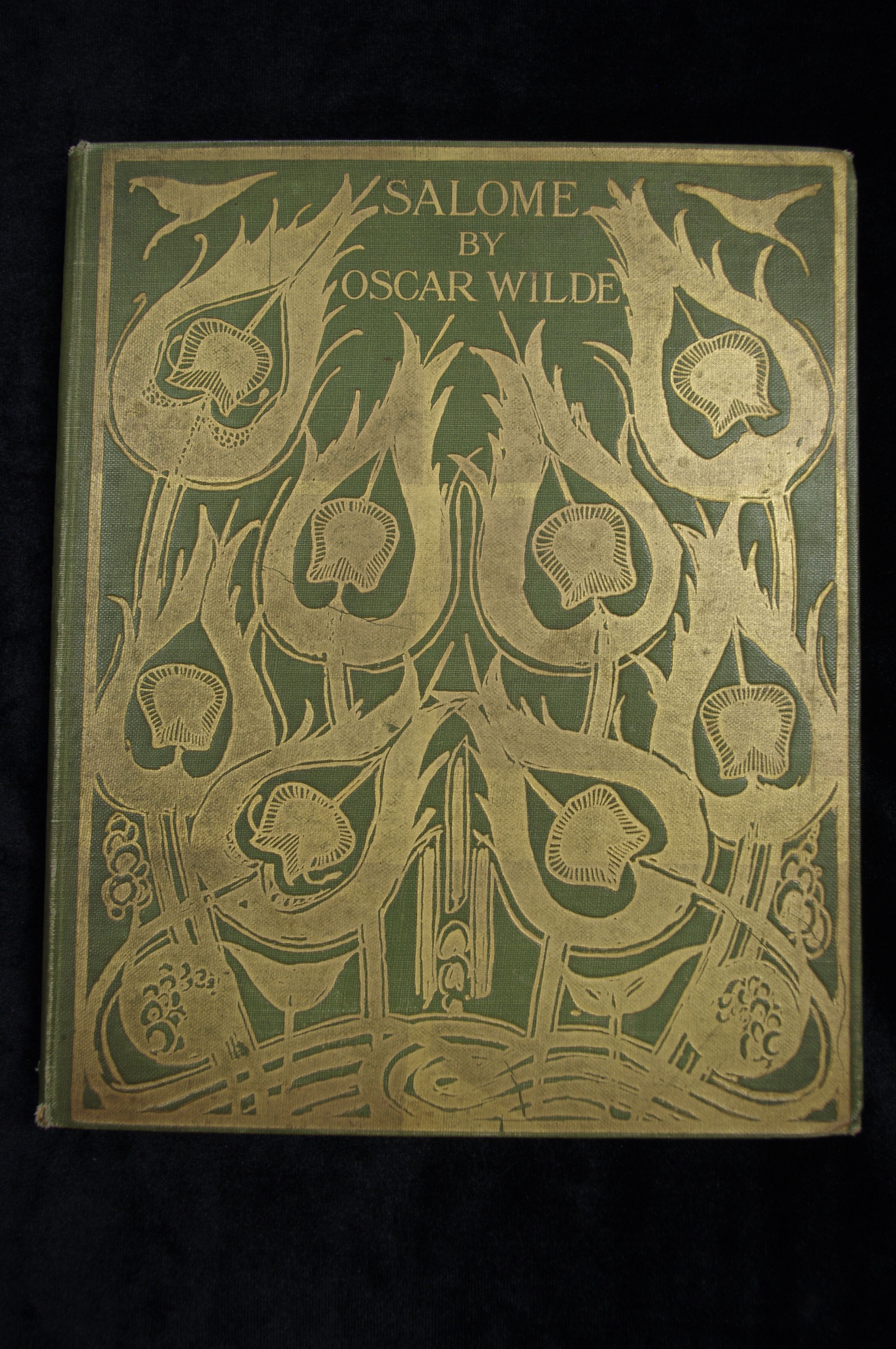Salome by Bertram Mackennal
Download

Salome, c. 1900
bronze
27.0 × 13.5 × 7.7 cm (sculpture)
4.1 × 8.8 cm (diameter) (base)
Gift of Dr Joseph Brown, 1980
University of Melbourne Art Collection
1980.0010

Ian Potter Museum of Art, University of Melbourne
The legend of Salome comes from the Gospels of Matthew (14: 3–11) and Mark (6: 17–28). Both tell of Salome, daughter of Herodias (wife of Herod Antipas), whose dance so pleased her stepfather (who was also her uncle) that he promised her whatever she desired as a reward. At the bidding of her mother, who was fuelled by a vendetta, Salome requested the head of St John the Baptist on a dish.
Bertram Mackennal’s Salome statuette was created at the end of the 19th century, during a period of intense interest in this character. Many fin-de-siècle artists and writers were fascinated by the idea of the femme fatale: the smart and seductive woman capable of persuasion and emasculation. Mythical figures such as Circe and Lilith, sphinxes and sirens, as well as biblical characters like Delilah and Salome, were represented widely, and were particularly popular among pre-Raphaelite artists.
As Mackennal was sculpting Salome, an infamous play of the same name, penned by Oscar Wilde, had been in circulation since 1891. Wilde expanded on the verses from the New Testament, accentuated the dance by which Salome seduces and manipulates her lust-crazed stepfather/uncle, and brought the character of Salome to the centre of the story. It is this Salome to which Mackennal is responding: nude and elongated, and holding a long sword behind her back – a symbol of her destructive power.
Teaching ideas
The University of Melbourne’s curriculum is rich and varied, and changes from year to year. For more teaching ideas, contact a collection manager.
Decadent Literature
Consider the reception of Oscar Wilde’s Salome in the late 19th century and the manner in which it altered the traditional representation of the character. Compare and contrast with representations of Salome in Aubrey Beardsley’s illustrations for the first edition of the play (created around the same time as Mackennal’s statuette).
Art History: Theory and Controversy
Consider how Salome challenges and responds to the male gaze for 19th-century viewers. Compare perhaps with other works by Mackennal, notably Circe.
Sex, Gender and Culture: An Introduction
Compare historical depictions of Salome across art and literature, noting the decisive change in her representation throughout the second half of the 19th century. See in particular the several works by Gustave Moreau, and in the University of Melbourne collections: Aubrey Beardsley’s illustrations for Oscar Wilde’s Salome and the present Bertram Mackennal. Compare these with Coriolano’s 17th‑century woodcut after Guido Reni, or more broadly with historic works by Titian and Caravaggio. In this context, Mackennal’s Salome represents an historic point of change for this figure and character. Situate it in the changing position of women in art and literature.
Film Noir: History and Sexuality
Use Salome to explore the mid- to late 19th-century fashion for representating the femme fatale, and consider how this term was adopted by other media and evolved throughout the 20th century.
Interpreting Exhibitions
Salomesits on a rotating pedestal. Consider the complexities of displaying three-dimensional objects and identifying the ‘best’ angle at which to position a work.
Intersecting objects
-

Oscar Wilde (Irish, 1854–1900)
illustrated by Aubrey Beardsley (English, 1872–1898)
Salome: A tragedy in one act
London: John Lane, 1907
Grainger Museum
University of Melbourne -

Bartolomeo Coriolano (Italian, c. 1599 – c. 1676)
after Guido Reni (Italian, 1575–1642)
Herodias and Salome with the head of St John the Baptist, 1632
chiaroscuro woodcut
16.6 × 18.7 cm (block)
17.1 × 19.3 cm (sheet)
Purchased 1989
Baillieu Library Print Collection
University of Melbourne
1989.2002
To learn more, visit the websites of the Ian Potter Museum of Art, the Grainger Museum and the Baillieu Library Print Collection.
References
Juliet Peers, [Salome by Bertram Mackennal], in Chris McAuliffe & Peter Yule (eds), Treasures: Highlights of the cultural collections of the University of Melbourne, Melbourne: Miegunyah Press, 2003, p. 188.
Juliette Peers, ‘Bertram Mackennal’, in Visions past and present: Celebrating 40 years, Ian Potter Museum of Art, University of Melbourne, 2012, p. 47.
Belinda Nemec, Curiosity: 150 years of collecting at the University of Melbourne, Melbourne: Ian Potter Museum of Art, University of Melbourne, 2003.
Further reading
Bram Dijkstra, Idols of perversity: Fantasies of feminine evil in fin-de-siècle culture, New York: Oxford University Press, 1986.
Deborah Edwards, Bertram Mackennal: The fifth Balnaves Foundation sculpture project, Sydney: Art Gallery of New South Wales, 2007.